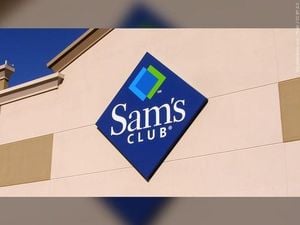The year 2025 promises to be transformative for home improvement enthusiasts with trends poised to reshape how Australians and American homeowners approach renovations. Homeowners are not just updating for style; they’re enhancing the livability and aesthetic value of their spaces to draw out the full potential of their properties. The focus is not just on functionality but also on making homes feel more connected to the environment and personal expression through design.
One of the standout trends for this year is the increase of biophilic design, which emphasizes the integration of natural elements within homes. The trend encourages the incorporation of natural light, airflow, and earth-derived materials, promoting both aesthetic appeal and mental well-being. The result? Creating serene settings can soothe the mind and calm the soul, fostering tranquility right within the living space.
Gone are the days when neutral hues ruled the roost. It seems 2025 is set to be bright and colorful. Home renovations will increasingly highlight rich tones like deep browns, jewel-toned purples, and warm blues. Critics argued last year about house flippers stripping old homes of their character through dull colors; this year the paintbrush is making its return. Expect to see not only vivid walls but also distinctive accessories such as hardware and doorknobs splashed with unexpected colors.
Another layer of sophistication will come from timeless elegance. Homeowners are rediscovering the beauty of period-accurate fixtures and architectural details. Instead of replacing original features, there’s growing interest in restoring and honoring the historical qualities of homes. By using furniture and hardware reflective of the building's period, renovators are adding authenticity and personality. It’s about respecting the past to enrich the future of the property.
Meanwhile, the trend of discreet smart technology is on the rise. Amid the convenience of technological advancements, homeowners are increasingly seeking to blend their gadgets seamlessly within their living spaces. Instead of making tech gadgets the centerpiece of the room, smart home devices are being integrated behind panels or within cabinetry, transforming how these appliances coexist with the home’s aesthetics. With less visual clutter, homeowners can enjoy intimate, serene spaces without sacrificing modern convenience.
Speaking of comfort, bathrooms emerge as luxurious oases more than simply functional spaces. 2025 is marked by designs encouraging genuine relaxation; expect to see features like wet rooms and spa-like showers enveloped with stone and glass installations, creating serene sanctuaries. Homeowners will prioritize aspects like waterproof audio systems and heated towel racks, enhancing the self-care experience.
Of course, it’s not just indoor spaces seeing growth; outdoor areas are receiving equal care. The trend of creating elevated outdoor entertaining spaces is set to flourish this year. Australians, known to cherish their outdoor lifestyle, are increasingly focusing on making their yards central gathering spots, equipped with amenities like built-in grills and outdoor kitchens, seamlessly extending their indoor living areas.
Homeowners will need to pay attention to exterior features, including layered lighting. Joanna Hartman, Principal at Page Paul Architecture & Interiors, noted, “Deploying exterior lighting similar to how we would on the interior makes the yard more welcoming, dramatic, and full of personality.” Innovative lighting design could involve low-level path lights paired with decorativefixtures, enhancing safety without compromising aesthetics.
Also gaining traction is regenerative landscaping—using native plants and sustainable practices to turn yards not only beautiful but ecologically sound. Brandy Hall, founder of Shades of Green Permaculture mentions, “You can also add features like rain gardens, cisterns, permeable pathways, and edible plants to your sustainable oasis.” With environmental stewardship becoming increasingly important, regenerative landscaping allows homeowners to positively impact their local ecosystems.
Lastly, we’re witnessing the return of bold colors on home exteriors. Kristen Brown, Director of Architectural Operations, observes rising requests for more colorful palettes, pushing the boundaries of traditional neutral tones. Homeowners are eager for originality, leaning toward unique blends of colors across various building materials.
Heritage and character, discretion within gadgetry, luxurious bathing spaces, and vibrant outdoor areas all signify 2025’s approach to home improving. Properties are not just becoming more valuable; they are reflecting the owners’ personalities and lifestyles more than ever.



